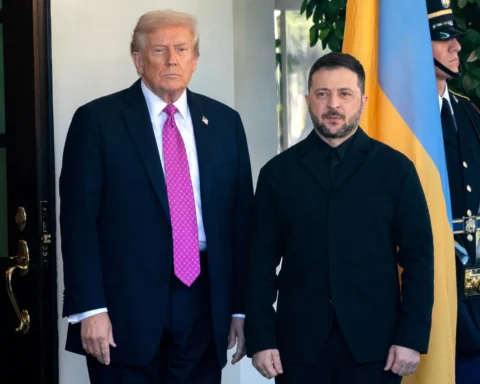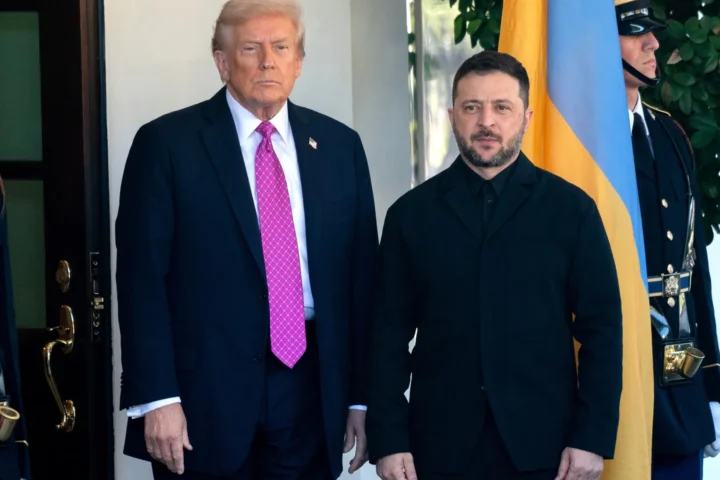Washington’s new sanctions on Russia’s largest oil companies — Rosneft and Lukoil — have become the most serious blow to Moscow’s crude exports in recent years. The restrictions, which came into effect on November 21, immediately jolted oil markets: traders and analysts are trying to understand how deeply these measures will reshape global supply chains and demand structure. According to Bloomberg, the consequences may prove far more significant than initially expected.
How the sanctions will affect the global oil market
Russia remains one of the world’s largest suppliers of hydrocarbons, exporting about 7.4 million barrels of crude and refined products per day — roughly 7% of global oil consumption. Now, the companies responsible for most of Russia’s seaborne shipments have come under direct US sanctions. Because global trade depends heavily on US and EU banks, insurers, and logistics services, much of the market is effectively forced to avoid transactions with Rosneft and Lukoil to dodge secondary sanctions.
India and China — Russia’s two biggest customers — together imported about 3.6 million barrels per day in October. Following the sanctions announcement, India’s refiners signaled they were ready to halt almost all purchases of Russian crude. In practice, imports have only slowed, but the risk of a full stop remains. Should India follow through, Moscow will face a sharp shortage of alternative buyers. China, according to market traders, has already canceled several shipments and shows no intention of increasing purchases.
A simultaneous withdrawal by Russia’s two largest customers would inevitably intensify competition for supplies from other producers and push global prices higher. On the day sanctions were announced, Middle Eastern benchmarks surged sharply, reflecting growing demand for alternative grades.
What exactly the US is imposing
The US Treasury sanctions target Rosneft, Lukoil, and all entities in which they hold direct or indirect stakes of 50% or more. American companies are prohibited from engaging in any transactions with these entities, while foreign firms risk secondary sanctions. The wind-down period allowing counterparties to close existing deals ended on November 21.
Earlier, under President Joe Biden, Gazprom Neft and Surgutneftegas were also sanctioned. The European Union later joined by banning dealings with Rosneft and Gazprom Neft.
In practice, the sanctions cut companies off from critical services — insurance, financing, shipping, and other elements of global trade — most of which operate under US and EU jurisdiction.
Why Washington is tightening pressure
Officially, the sanctions aim to reduce the Kremlin’s revenue streams used to finance the war in Ukraine. Oil and gas taxes make up about a quarter of Russia’s federal budget. According to Bloomberg, the administration of President Donald Trump has, for the first time, struck directly at Russia’s oil sector — marking a major shift in policy. Previously, the focus was on the price-cap mechanism introduced in 2022 by the G7, EU, and Australia.
The cap — set at $60 per barrel — restricted access to Western services for buyers paying above that price. In practice, however, Russia adapted successfully: a vast “shadow fleet” of older tankers and parallel networks of insurance and financing services emerged, enabling Moscow to maintain high export levels.
How the sanctions will hit Russia
Early signs of pressure are already visible. Russian seaborne shipments have begun to decline, the price of Moscow’s oil has weakened, and budget revenues have fallen to their lowest level in two and a half years — about $1.2 billion per week.
The key question is whether Russia can redirect the volumes lost from the Indian market. China, despite its strategic partnership with Moscow, has shown limited enthusiasm: its economy is slowing, crude stockpiles are high, and supply diversification has always been a priority for Beijing. Moreover, most of the Russian oil destined for India travels by sea, and rerouting it to China will be extremely difficult if Western shippers, banks, and traders refuse to participate.
In theory, Moscow could apply the same scheme used for Iranian oil — deliveries via the “dark fleet” and shadow financing to independent Chinese refiners. But such routes are limited in capacity and carry significant risks.
Impact on India
Indian refiners have already reduced Russian crude purchases for December. The country’s largest private company, Reliance Industries, announced a complete halt to processing Russian oil in the export-oriented part of its massive Jamnagar refinery. The final cargo of Russian crude arrived there on November 20.
For New Delhi, cutting imports may also ease trade tensions with Washington. The Trump administration previously imposed higher tariffs on Indian goods due to the country’s extensive purchases of Russian crude. Reducing reliance on Moscow could give India an argument for lifting these measures.
What China may do
China remains the largest buyer of Russian oil, but according to Bloomberg, its next steps are particularly difficult to forecast. Beijing has recently defused its trade confrontation with Washington and is not yet facing the same pressure of secondary sanctions as India.
However, China cannot easily replace India’s import volumes, especially seaborne ones. Logistics are complicated, and even state-owned Chinese energy companies are wary of secondary sanctions. Beijing could rely on mechanisms used for Iranian crude — “dark fleet” shipments and independent refiners. Yet scaling these schemes to several million barrels per day is practically impossible.
Will sanctions destabilize the global market
If India and China sharply reduce purchases of Russian crude, the global oil market will be forced into a rapid realignment: demand for Middle Eastern grades will spike, and prices may rise significantly amid tighter supply. Analysts are already noting growing volatility, with benchmarks climbing sharply.
At the same time, experience shows that Russian exports often decline only temporarily after sanctions: shadow fleet operators adapt, new routes appear, and shipments gradually recover. The ultimate impact will depend on how aggressively the US enforces secondary sanctions and how strictly intermediaries worldwide comply.
According to Bloomberg, the new sanctions package may become the most damaging blow to Russia’s oil sector since the start of the war, but its impact on the global market remains uncertain. Everything depends on whether India and China are willing to forgo cheap supplies to reduce sanctions risks — and whether Moscow can build new supply chains as its options narrow rapidly.
This article was prepared based on materials published by Bloomberg. The author does not claim authorship of the original text but presents their interpretation of the content for informational purposes.
The original article can be found at the following link: Bloomberg.
All rights to the original text belong to Bloomberg .


















